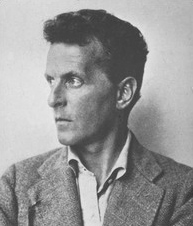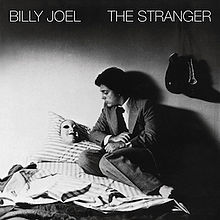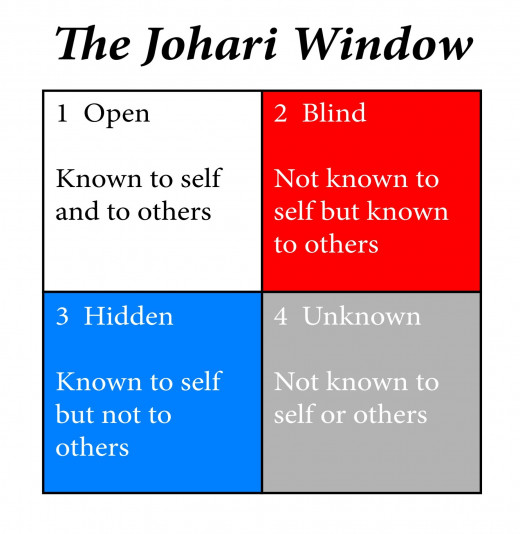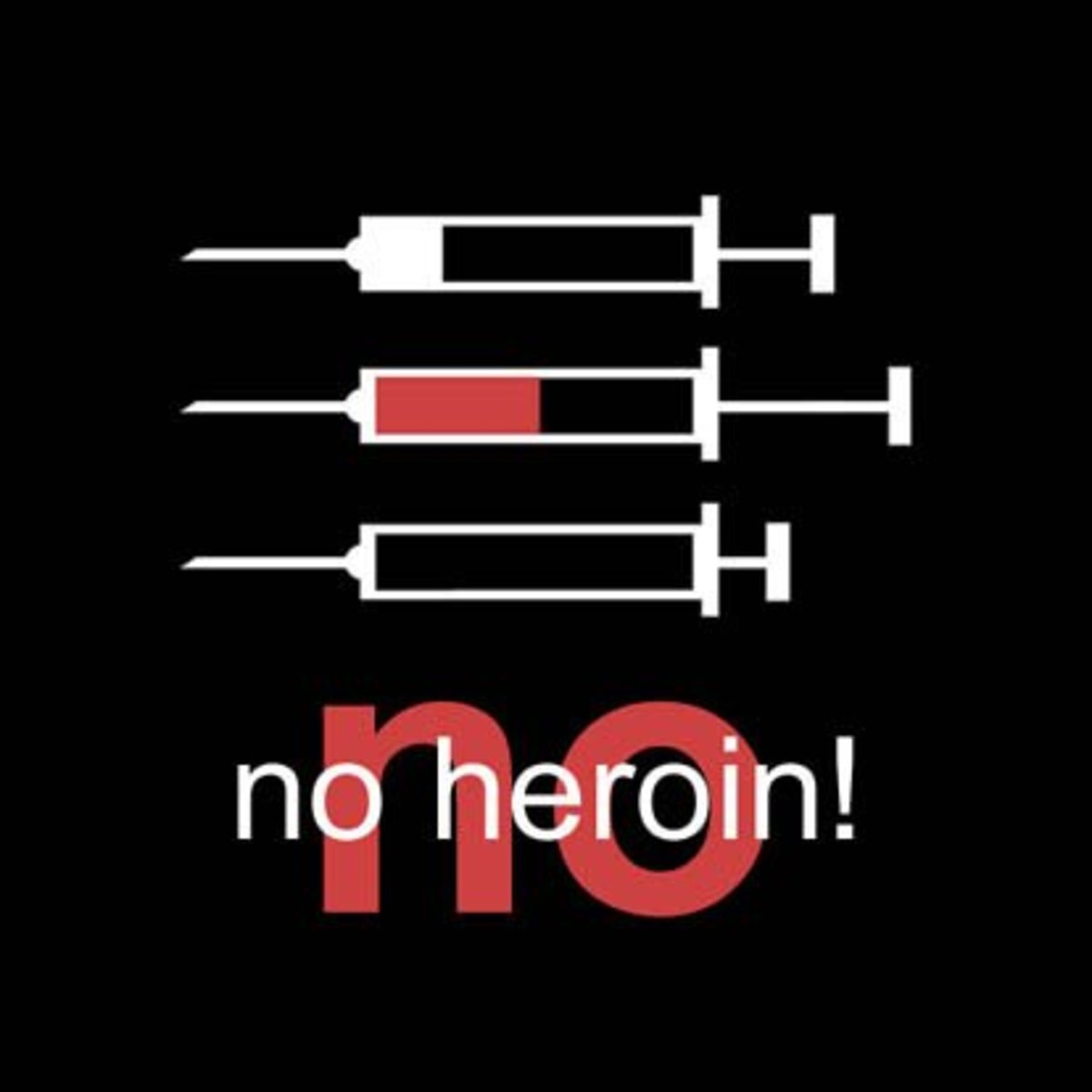Heroin Addiction and the Self
This is the fourth installment of the series on Heroin Abuse and Recovery in Delaware: From a Father's Perspective. This segment will focus on the how we define the "self" and the interplay heroin has.
Part One An Introduction to Heroin Use in Delaware
Part Two History of Heroin and Delaware
Part Three Heroin Use and Recovery in Delaware the Current Approach
Part Five Heroin Recovery A Systemic Approach
Figure 1

In 1933, the German Philosopher Ludwig Wittgenstein (Figure 1) posed this question at the start of the Blue Book: “What is the meaning of a word? Let us attack this question by asking, first, what is an explanation of the meaning of a word; what does the explanation of a word look like?” (Wittgenstein) Surface understanding of words rarely captures the true essence of their meaning especially since language is a rule driven activity with constantly evolving standards.
Word games have unnecessarily created barriers to addressing the problem of drug addiction, especially heroin use. Misunderstandings of the definition can cause misspent energy on false efforts, such as the famous, Just Say No campaign, of President Reagan’s administration, or the War on Drugs, which has been a part of every administration since President Nixon. To understand how a society can help and provide services, which assist a person to be successful in their recovery journey, a common understanding what a heroin addiction is, and what makes up the self has to be established.
Trying to understand what an addiction is and what makes up the self is not the same as justifying the actions of the addict. It is not uncommon for the addict to participate in illegal activity because of their drug use; they are still accountable for their action. What we are trying to do here is understand two critical component of this discussion, the self and addiction. With those descriptions in place we are able to build an educated response to the challenges to recovery based on fact, not fear.
The first term we are going to look at is addiction. According to NIH an addiction is, “A chronic, relapsing disease, characterized by compulsive drug seeking and use accompanied by neurochemical and molecular changes in the brain.” (NIH) A key word in this definition is “disease” which implies that choice is not a key aspect of the user. Disease is a surprising hard label to find a medically agreed upon definition. The Oxford online dictionary gives the following description. “A disorder of structure or function in a human, animal, or plant, especially one that produces specific signs or symptoms or that affects a specific location and is not simply a direct result of physical injury.” (Oxford) A disease means that a system within the body is not working properly. As such, addiction has been identified as a disability under the American with Disabilities Act (ADA), which means he, or she has a physical or mental condition that substantially limits a major life activity. (EEOC)
Many people would argue a user had a choice to take the drug in the first place. Just like many other conditions, the first action does not mean you have the full on disease. If I get sunburn because I allowed myself to become over exposed to the sun it does not automatically mean I will later develop skin cancer. But, repeated over exposure increases my chances of developing a condition such as melanoma. Before drug use becomes an addiction, disease, or disability the NIH defines the stages a user first goes through.
- Experimental use -- typically involves peers, done for recreational use; the user may enjoy defying parents or other authority figures.
- Regular use -- the user misses more and more school or work; worries about losing drug source; uses drugs to "fix" negative feelings; begins to stay away from friends and family; may change friends to those who are regular users; shows increased tolerance and ability to "handle" the drug.
- Problem or risky use -- the user loses any motivation; does not care about school and work; has obvious behavior changes; thinking about drug use is more important than all other interests, including relationships; the user becomes secretive; may begin dealing drugs to help support habit; use of other, harder drugs may increase; legal problems may increase.
- Addiction (dependence) -- cannot face daily life without drugs; denies problem; physical condition gets worse; loss of "control" over use; may become suicidal; financial and legal problems get worse; may have broken ties with family members or friends. (Berger)
The purity of the drug being abused, the physical condition of the user and the environment all are contributing factors in how fast a person progresses through each stage. What makes heroin so addictive is when it interacts with the brain it converts back to morphine and attaches to the opioid receptors causing an almost instantaneous feeling of euphoria/pleasure. After the initial rush, the user suffers from cloudy or fussy cognitive processes and a heaviness of the arms and legs. Depending on which study you read the intense euphoric sensation lasts less than a minute. With the effects of the drug starting to wear off in 2 to 3 hours depending on the amount of the drug taken, how the person reacts to the drug, and their level of tolerance.
Tolerance to any drug (including prescription medication) happens overtime with repeated use the body begins to change how it responds. In the case of heroin, the constant usage affects the analgesic qualities thereby requiring the user to ingest more of the drug to obtain the same effect, but never being able to reach the intensity of that first rush. The higher the level of tolerance means that the chance of accidental overdoses and death increases.
Another infamous term associated with addiction is withdrawal. According to the website MedLinePlus, “Opiate withdrawal refers to the wide range of symptoms that occur after stopping or dramatically reducing opiate drugs after heavy and prolonged use (several weeks or more).” (Heller) Symptoms can include agitation, anxiety, muscle aches, increased tearing, insomnia, runny nose, sweating, yawning, abdominal cramping, diarrhea, dilated pupils, goose bumps, nausea, and vomiting. Looking at the list one might want to compare withdrawal to the flu, except the fierceness of the symptoms is hard to tolerate. The intensity of the withdrawal is a major factor in addiction relapse; the addict will use the heroin to self-regulate the pain they are going through; thus creating a cycle of abuse.
If there was only a physiological aspect to the drug then recovery would be a relatively easy process, all a person would have to do is break the chemical addiction, sweat through the withdrawal, and move on. However, a psychological dependence interacts with the self on an intimate level. In his treaties, On the Social Contract, Rousseau states, “Man is born free, and everywhere he is in chains. He who believes himself the master of others does not escape being more of a slave than they.” (Rousseau 141) This is especially true about addictions where the user feels they are free from reality. Heroin gives the user a false since of control, while masking the person from himself or herself. Heroin takes over the self/identity of the user until they are unrecognizable. Not until they are well into the recovery process does the user understand how much of a slave they are to the drug. Often they do not get a full appreciation of the extent of the servitude until they have moved beyond the drug and reflecting on their past.
The next term is something that Philosophers have been arguing about for centuries; what constitutes the self? As the translator of Martin Heidegger’s work Identity and Difference, Joan Stambaugh put it. “The Problem of Identity has been a basic philosophical issue since Parmenides. Parmenides stated it in the form: “thought and being are the same,” with a radicality and simplicity perhaps never again possible for later thinkers.” (Stambaugh) Developing a universally acceptable idea of the self has become complicated as we gain increased knowledge about the self. However, if we are not able to understand the self, than all subsequent actions about healing the self will be based on a false premise.
Heidegger gives us some insight into the answer. “Man obviously is a being. As such he belongs to the totality of Being—just like the stone, the tree, or the eagle. To “belong” here still means to be in the order of Being. But man’s distinctive feature lies in this, that he, as a being who thinks, is open to Being, face to face with Being; this man remains referred to Being and so answers to it. Man is essentially this relationship of responding to Being, and he is only this.” (Heidegger 31)
Figure 2

In another article I explore the possibility of a Universal self, I postulated, there is an, “essential essence to humanness, a Universal self; while the essence is transcendent, at the same time it is also constantly evolving” (Monroe) Core to every human is the need to understand and adept to the environment they find themselves in. The second part is ability to tell distinguish between others and myself. How the second part develops is dependent on the environment of the first essence. “The process a culture goes through to describe itself is very similar to how a person describes himself or herself. It becomes critical to understanding these first two Universalities. In a culture, there are defined roles that people play which are based upon their gender, race, employment status, social class, etc. The role that each person plays helps to define the community or culture as a whole.” (Monroe) With that as a starting place, the development of the self is distinct to the individual as a fingerprint. How my beliefs and principles are formed and present themselves in the empirical world is unique to me.
Humans are pulled from so many different directions in attempt to make us conform to competing norms. In the process of understanding our existence, how we come to know ourselves becomes fragmented. We start to create a facade that we are willing to show in public and hide things we think will be unacceptable. There is a 1977 song by singer/song writer Billy Joel called The Strange, (Figure 2) which introduces the concepts of a public and private self.
Well, we all have a face that we hide away forever
And we take them out and show ourselves when everyone has gone.
Some are satin, some are steel,
Some are silk and some are leather.
They're the faces of a stranger,
But we'd love to try them on. (Joel)
For many reasons we limit how much information we let the external world know about our inner most self. The public face is how the individual perceives how they should act or the face that they put on for the world to see. The public face may be very different then the private self.
Figure 3

In 1955 two American psychologists, Joseph Luft (1916–2014) and Harrington Ingham (1914–1995) developed a tool called the Johari window. (Figure 3) The tool was designed as a gateway for self-understanding. The window divides the self into four separate quadrants, Open, Blind, Hidden, and Unknown. Open is the information that is known to others and me. While hidden is what I think I know about myself, and guard against letting others know. Blind is inform that others know about me, yet I am blind to or choice to not to acknowledge. Finally mystery is the area of my personality that in unknown to others and myself. This is relevant to the current discussion it highlights how the user hides the reasons for the use.
In the following monologue from the play Dope, Louie is trying to explain why he does heroin. You can see where he is trying to balance the public and private self.
Louie. Man, it does. A cage! Ssh, don’t interrupt. I’m seeing it. This whole jungle, all of it man, inside a cage. Everything wild—mashed flat and stuffed into this cage. And look at them—all these faces, thousands of faces in there flattened out and dead, man—and one or two soft alive faces—their bodies stuffed in there too—their heads hanging out, trying to sneak through or breathe. Yeah—Porse and them are in there, too. They’re all in there. We’re all inside! (Pause.) See—once you take it, man, you can see what is a cage and what ain’t—and you can get free, free of all this ace-king-queen crap, free like a bird way up there that flies up, up, up and busts itself right through space….That’s what it is. No troubles, nobody telling you where you’re at, no kids running around loose, no women yelling. (Sighs.) Yeah. No women yelling. (Lee 10)
Louie is looking for an escape, he feels trapped in his situation, and he believes the heroin will break him free, even if it only for a fleeting moment. The questions the individual has to answer include: Why do I feel trapped? Why is this, his only escape? Why is this, the only thing that makes me feel good? There is something in his situation and the drug helps him mask and block his access to the private/unknown part of his self. The public self that he is presenting is one of being control, but he is blind (or in denial) of the control the drug has over him.
The mind takes the information from the physical world and translates it. In 1748, the Scottish philosopher and historian David Hume discusses the power the mind has. “And while the body is confined to one planet, along which it creeps with pain and difficulty, the thought can in an instant transport us into the most distant region of the universe, or even beyond the universe, into the unbound chaos, where nature is supposed to lie in total confusion.” (Hume 11) I am not accusing Hume of being a heroin addict; he is talking how the mind transcends the body. If the mind cannot make sense of the world then it does what it can to alter that reality.
We are being that are trying to understand the world that we find ourselves in while addiction is a disease that masks access to reality. Heroin interacts with the body on two levels, the physical and the mental. If both sides are not addressed, then chances of recovery are greatly diminished. In the next section, we will discuss the approach for addressing both sides of the disease. Keeping in mind the challenges in receiving support that was discussed in the last section.
Have you ever noticed the change in a person caused by heroin?
References
Berger, Fred K. MD. (Updated By). MedLinePlus. Substance use disorder. http://www.nlm.nih.gov/medlineplus/ency/article/001522.htm. February 4, 2014 (Accessed March 8, 2015)
Equal Employment Opportunity Commission (EEOC). A Technical Assistance Manual on the Employment Provisions (TITLE I) of the Americans with Disabilities Act. http://askjan.org/links/ADAtam1.html#VIII. January 1992 EEOC-M-1A. ADA Technical Assistance Manual Addendum (10/29/02). (Accessed March 29, 2015)
Heidegger, Martin. Translator Joan Stambaugh. Identity and Difference. The University of Chicago Press. 2002 (original copyright 1957)
Heller. Jacob L., MD, MHA (Reviewed by), MedLinePlus. Opiate withdrawal. http://www.nlm.nih.gov/medlineplus/ency/article/000949.htm. April 5, 2015 (Accessed March 8, 2015)
Hume, David. Edited by Eric Steinberg. An Enquiry Concerning Human Understanding. Hackett Publishing Company Inc. 1993 (original 1748)
Joel, Billy. The Stranger. A&R Recording, Inc. Family Productions/Columbia. July–August 1977
Lee, Maryat, Dope. Samuel French. 1951, 1953, 1967, 1979, and 1981
Monroe, Mark. Universality Diversity Self-Identity. http://mark-monroe.hubpages.com/hub/Universality-Diversity-Self-Identity. 2012, update October 30, 2013 (Accessed February 4, 2015)
Oxford Online Dictionary. Disease. http://www.oxforddictionaries.com/us/definition/american_english/disease. (Accessed June 15, 2015)
Rousseau, Jean-Jacques. Edited Donald A. Cress. The Basic Political Writings. Hackett. 1987
Wittgenstein Ludwig. The Blue and Brown Books: Preliminary Studies for the ‘Philosophical Investigation’. Harper Torchbooks. 1960 (original 1958)
Figure 1: Ludwig Wittgenstein. http://www.iep.utm.edu/wittgens/
Figure 2: The Stranger. Family Productions/Columbia. https://en.wikipedia.org/wiki/File:Thestranger1977.jpg
Figure 3: Johari Window. http://brettselby.com/wp-content/uploads/2012/01/Johari-Window2.jpeg









